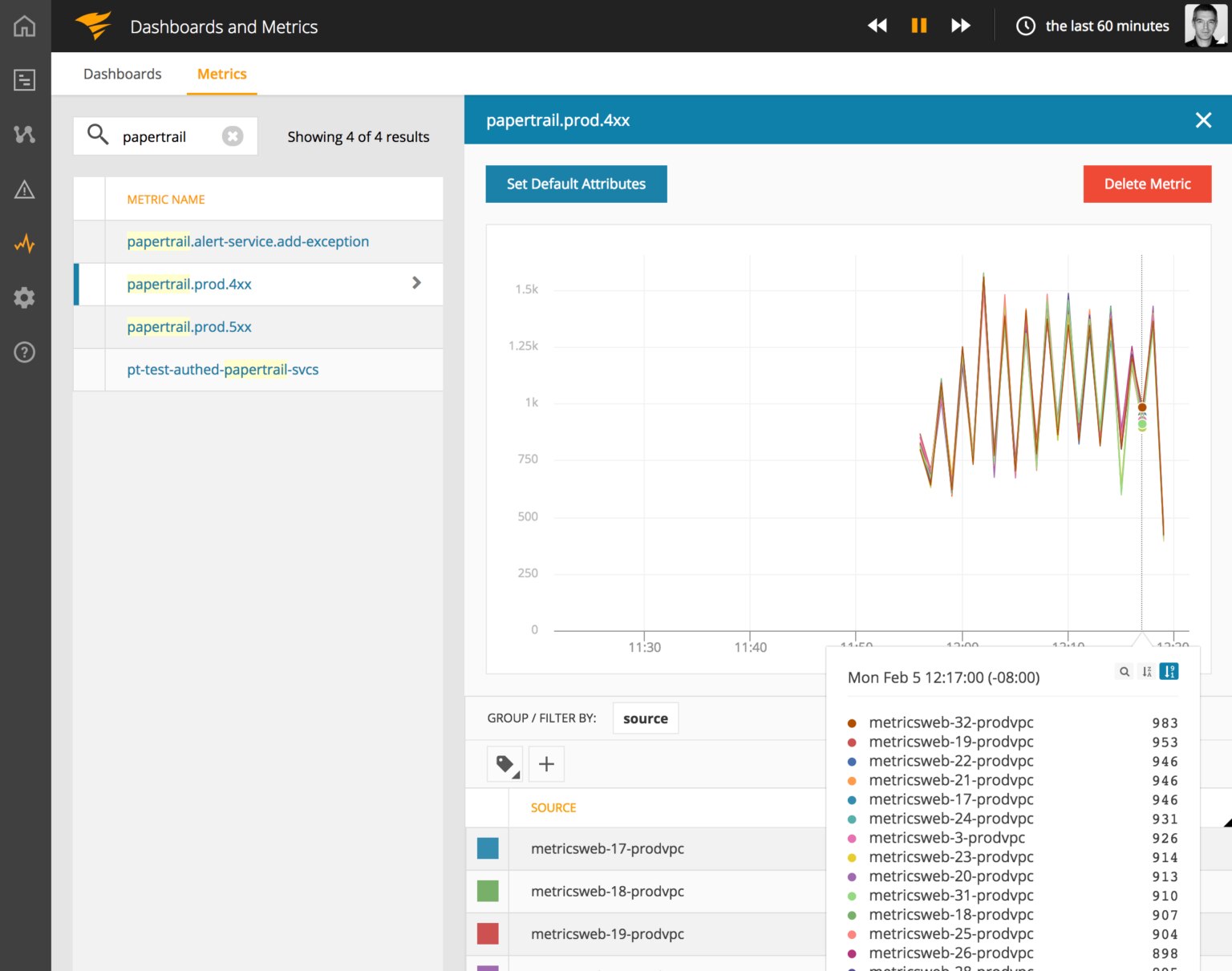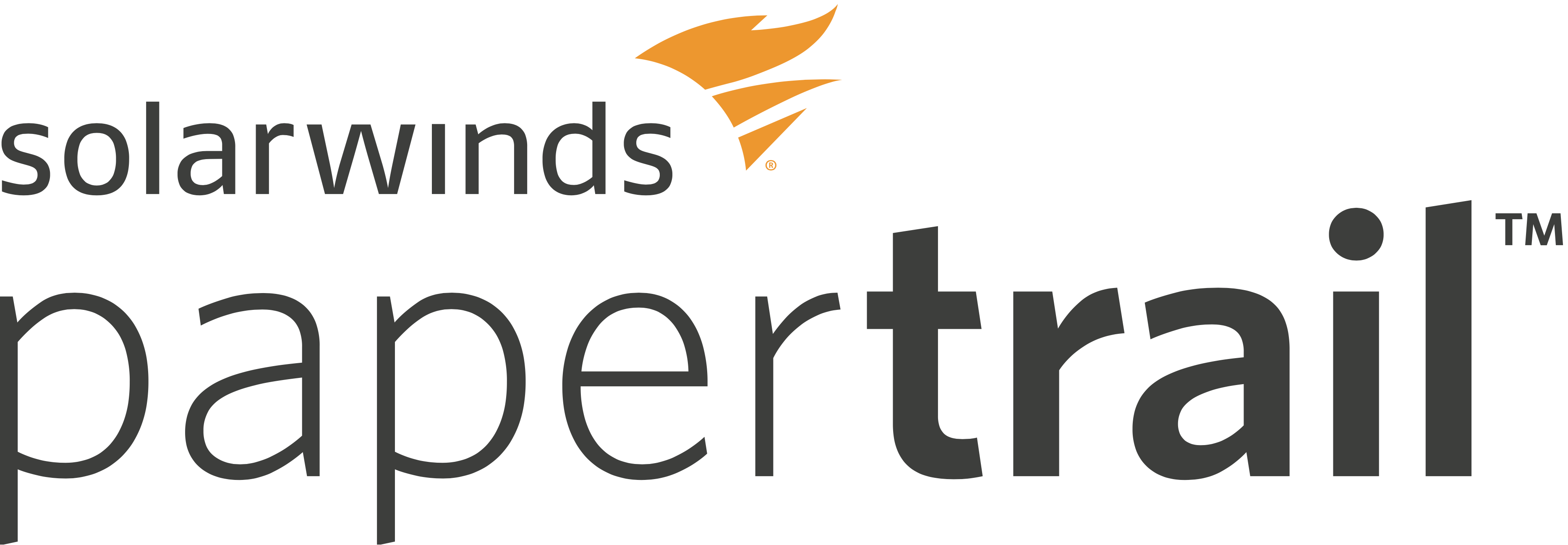

Therefore, never store application-specific data in your container.įor the same reason, you should take good care of your logs. However, every time a container restarts, you lose all the data it holds. You can easily create and destroy containers.

Logtail vs papertrail trial#
Start FREE Trial 4 Best Practices When Logging in Docker Export Logs to Persistent Storage You can find more information in the Papertrail tutorial. Make sure to change the syslog-addressproperty to your custom Papertrail address.
Logtail vs papertrail driver#
Syslog+tls://:XXXXXĪlternatively, you can configure the syslog driver to tell the container where to send logs.

v=/var/run/docker.sock:/var/run/docker.sock gliderlabs/logspout \ The below example starts a logspout container configured to send logs to Papertrail. In this section, we’ll give you a simple example of how you can configure Docker to send logs to Papertrail.įirst of all, you can run a logspout container, which allows you to configure an address to send logs to.

This means you can specify a very accurate timestamp from which you want to display logs, or a less specific timestamp, as shown in the example above. The accepted format here is YYYY-MM-DDTHH:MM:SS. Let’s say you want to see the logs from a specific point in time until now. The opposite action is also possible with Docker CLI options. For example, to see the logs for the last 30 minutes, use the following command: docker logs -follow -until=30m #3: Stream Logs From a Specific Point in Time You can use different notations to designate the timescale. The until option allows you to specify a time span for which the container should print logs to your CLI. Here, you can use the until option with the follow option. In this case, you don’t have to create a never-ending stream of logs. For example, logs written during the first three seconds when the container was active can tell you if the container started successfully. In this case, you can use the tail option to specify the number of logs you want to see: docker logs -tail 100 #2: Stream Logs Until a Specific Point in Timeĭocker provides the option to only stream logs from a specific time. Perhaps something happened, and you want to quickly verify the latest 100 logs for your container. In some cases, you don’t want to see all logs for a container. Here are three useful logging tricks you can access through your CLI. Next, let’s explore more interesting tricks related to displaying Docker logs. To tail the logs for our container, we can use the follow option. In Docker jargon, we refer to creating a continuous stream of log output as tailing logs. Now that we’re sure our container is running, let’s use the container ID to see all its logs.Įnter the following command in your command-line interface (CLI), replacing with your container’s ID: docker logs Īlthough this will show us the logs, it won’t allow us to view continuous log output. CONTAINER ID IMAGE COMMAND CREATED STATUSįcae22fa4144 xyz/my-image:latest "/opt/bin/entrypoint-" 2 hours ago Up 2 minutesġ55206af2f03 abc/my-image:latest "/entrypoint.sh mysql" 2 hours ago Up 2 minutes You’ll see their IDs, used images, start commands, how long the containers have been running, and many other variables.įor us, the most important parameter is the container ID, which we will use in the next step. This command prints a list of running containers. How can we accomplish this task?įirst, we can use the following command to check for currently running containers: docker ps -a Imagine we’re running a container and want to access the logs for this container. For example, Loggly offers this feature for any type of log, so you can detect anomalies faster and shift from reactive to proactive monitoring. In addition, you can apply trend analysis to Docker logs to detect anomalies. Thus, developers and engineers can solve issues faster. Logs are most useful when debugging or analyzing a problem because they offer insights into what went wrong. Importance of Docker Logsĭocker logs are important for developers and DevOps engineers. Let’s learn first about the importance of Docker logs.
Logtail vs papertrail how to#
And in this article, you’ll learn how to display Docker logs in your console, tips and tricks related to displaying logs, and how to configure Docker to send logs to SolarWinds ® Papertrail ™. To display these valuable logs, you can use a range of Docker log commands. Therefore, you won’t see any logging or other output from your Docker container. However, if you run a container in detached mode, you can’t see the logs in your console because detached mode refers to running a container in the background of your terminal. A log is basically data written by the container to STDOUT or STDERR. Every container produces logs with valuable information.


 0 kommentar(er)
0 kommentar(er)
